'Up to their waists in blood': New drone video exposes Japanese dolphin slayers
WARNING - GRAPHIC CONTENT: Drones have captured horrific video of dolphins being stabbed to death by hunters in Japan.
In activist group Dolphin Project’s most confronting video yet, men in motorboats have herded the pod into a place known as The Cove.
Dolphins jump out of the water, but a patch of the blue ocean has already turned red with dolphin blood.

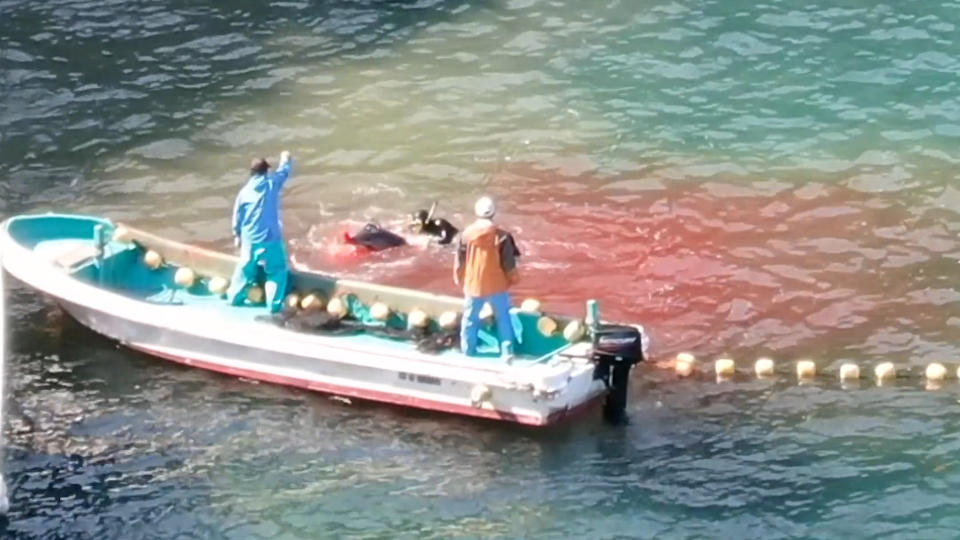
Men on the boats direct the hunters in the water who duck-dive in search of their prey.
They grab a striped dolphin with their gloved hands. Blood erupts from the dolphin’s face.
The well practised hunters appear to grab the animal’s dorsal fin and ride it out of shot.
For over a decade, activists have travelled to Taiji, 420km southwest of Tokyo, to film the annual dolphin hunt.
Hunters combatted their efforts to publicise the slaughter by erecting large tarpaulins to hide the event from the cameras.
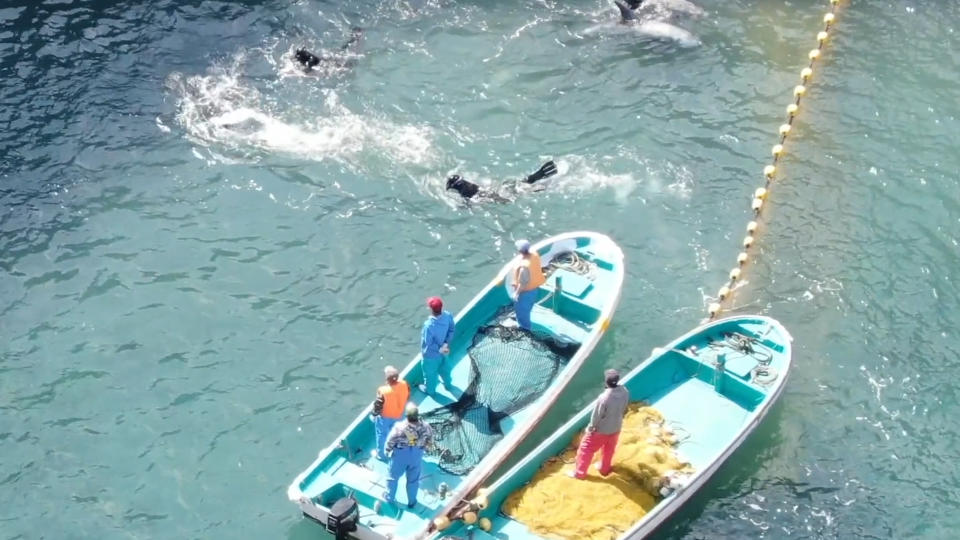
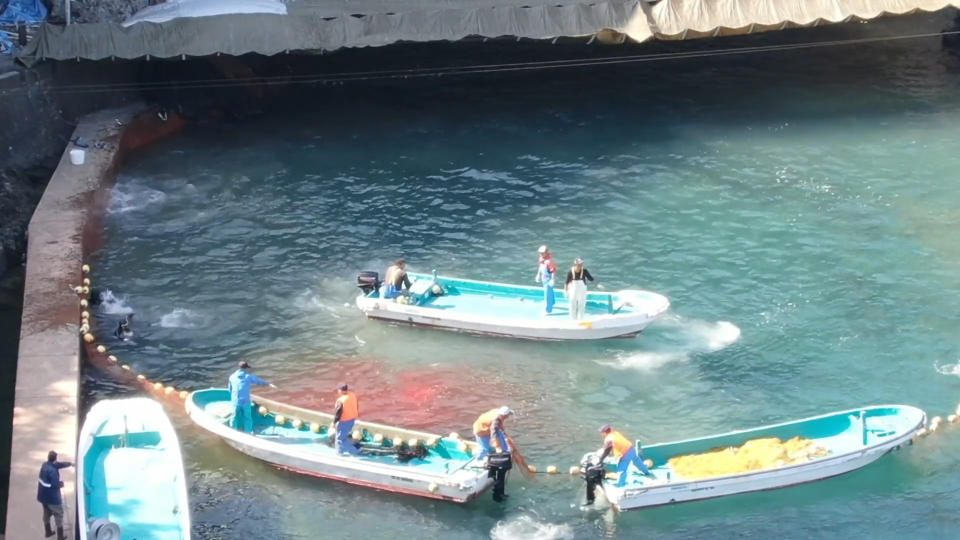
‘Feel what the dolphins are feeling’
Dolphin Project’s Lincoln O’Barry told Yahoo News Australia that until now, activists had been live streaming from a great distance using their phones.
“We’ve been seeing it now for 12 years basically from the same couple of angles, he said.
“It’s very limited and the hunters do that on purpose.
Mr O’Barry said the drone captured an entire dolphin drive from beginning to end.
“It’s heartbreaking to see this and it’s happening six months out of the year, every day,” he said.
“We’re seeing it from the dolphin’s point of view for the first time.
“You really feel what the dolphins are feeling - it’s a much more emotional experience to watch it.”
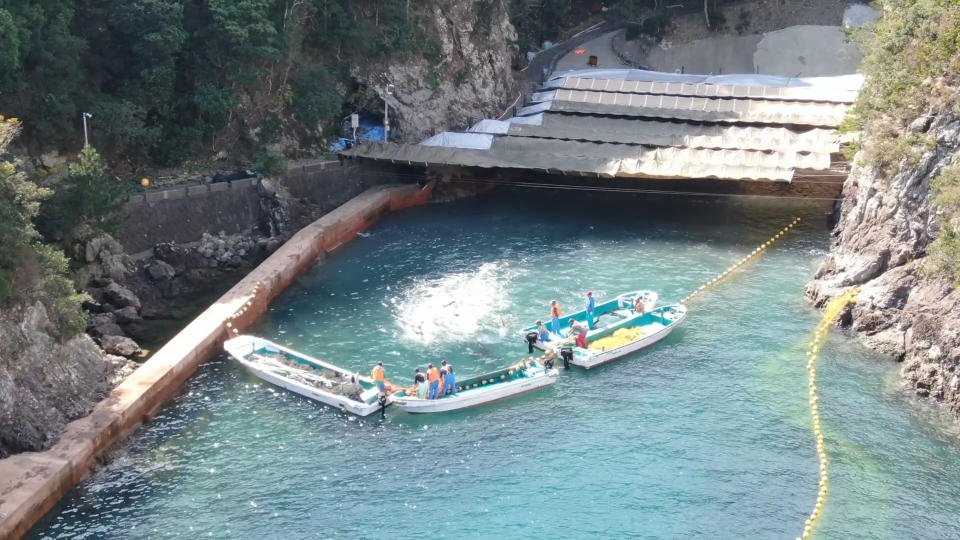

‘Wrong side of history’
Before the hunters begin killing, dolphin trainers are often invited to get in the water and choose animals for their aquariums.
International Marine Animal Trainer’s Association (IMATA) executive director William Hurley issued a statement to Yahoo News Australia saying they oppose dolphin drives.
“The individuals who make up IMATA’s membership look quite negatively upon the tragedy of drive fisheries,” he said.
“If you love animals, how could someone see the slaughtering of those animals as anything other than repulsive?
While IMATA oppose the dolphin slaughter, it counts dolphin trainers who buy animals from the Taiji hunters amongst its members.
Mr Hurley said some dolphin parks in Asia are not at the “same level” as those in the west.
“What then do we do? “ he said.
“Make matters worse for those animals by not allowing caregivers access to the very tools that can not only make animal welfare improve in Asian facilities, but can inevitably result in a diminished if not eliminated market for them?
“We do so by creating sustainable animal populations within Chinese and Japanese zoological facilities.
“We’ve done so in the United States, so why not there?”
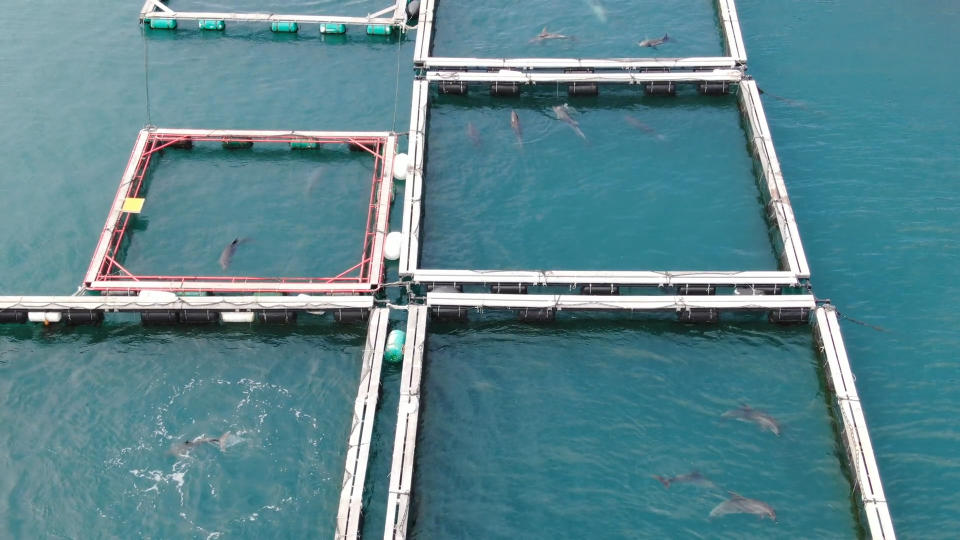
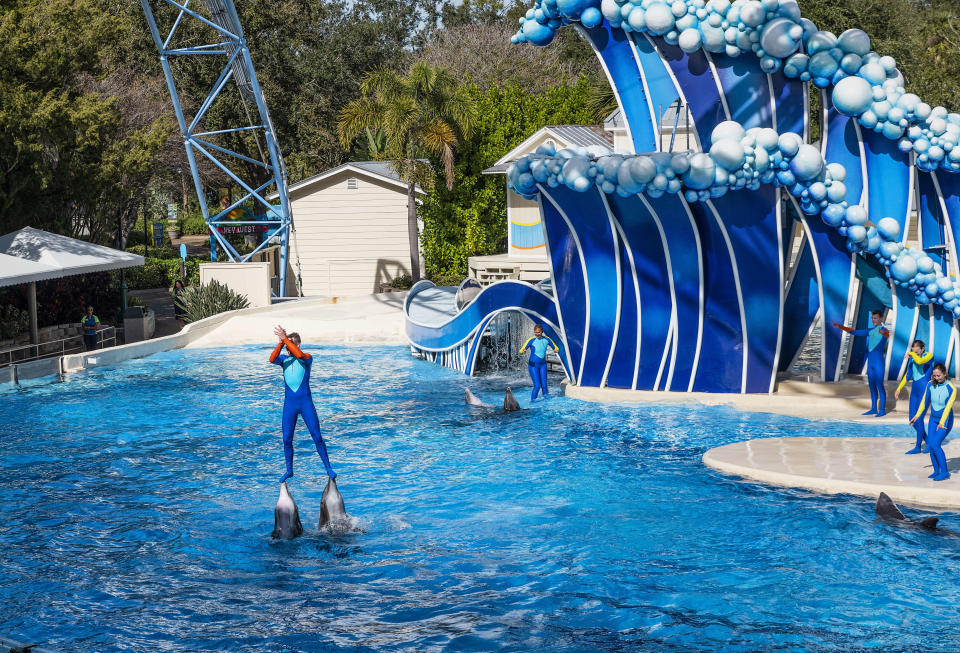
Former animal trainer and founder of Dolphin Project, Ric O’Barry argues the Taiji dolphin drive would have gone out of business if it wasn’t for the huge sums of money they make selling live animals into captivity.
“It used to be about meat but now it’s about live dolphins for sale,” he told Yahoo News Australia.
“IMATA are part of the problem – they are as guilty as the dolphin trainers standing up to their waists in blood, selecting those that people will pay tickets to see,”
He argues that if IMATA want to stop the dolphin slaughter they need to travel to Taiji and witness the slaughter and protest on the ground.
“When this level of cruelty is absolute, IMATA should show up and oppose it absolutely,” he said.
“They talk about conservation, but they don’t actually show up.
“They need to take a position, a real position - stand up with a sign or something and say ‘we oppose this’.
“The dolphin slaughter is based on supply and demand like any other product and (IMATA) are on the wrong side of history.”
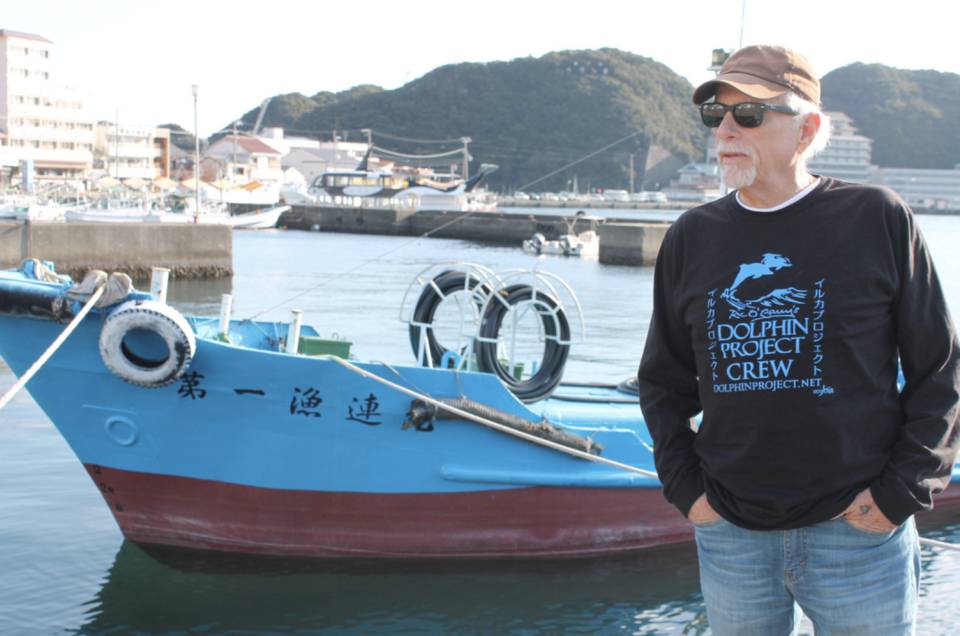
Mr O’Barry fears that the demand for live marine mammals caught during hunting drives will only increase as China’s middle class grows.
“There are something like 80 new huge dolphinariums in China to meet the demand of this new emerging middle class.
“They want dolphinariums, they want Las Vegas, they want to get on planes and fly around the world – all the things that us westerners did.
“Make all the same mistakes.”
Do you have a story tip? Email: newsroomau@yahoonews.com.
You can also follow us on Facebook and Twitter, download the Yahoo News app from the App Store or Google Play and stay up to date with the latest news with Yahoo’s daily newsletter. Sign up here.
